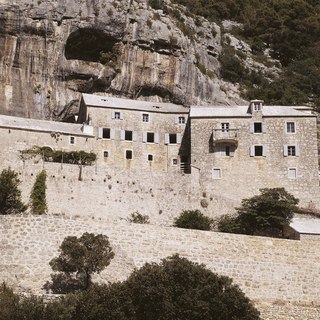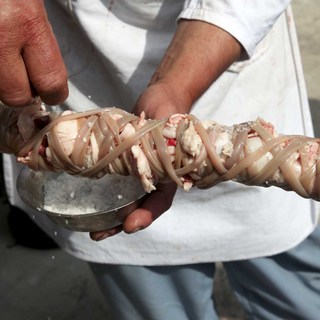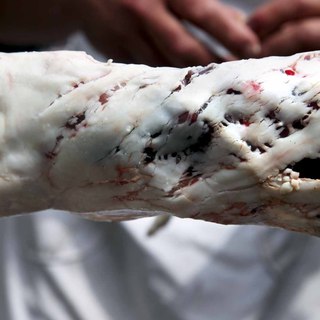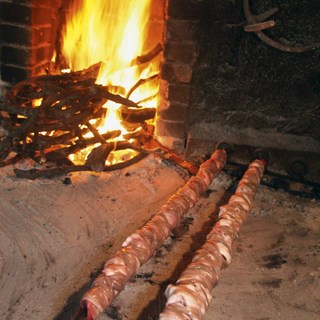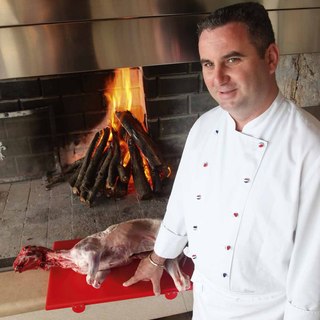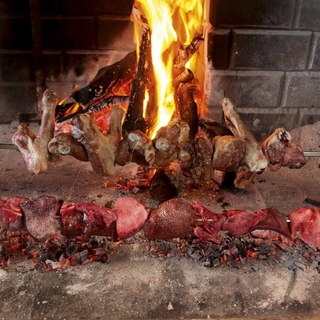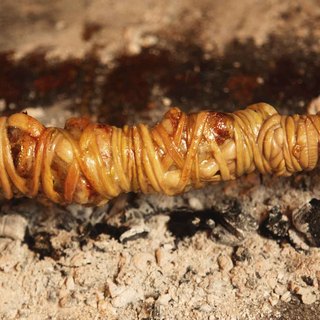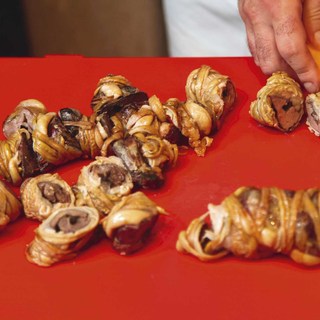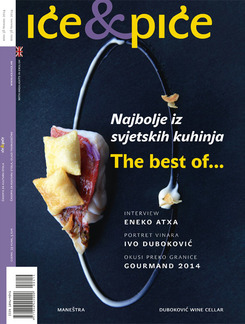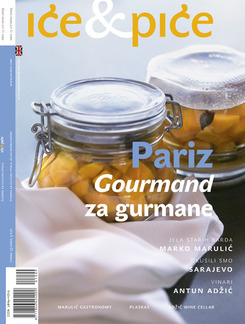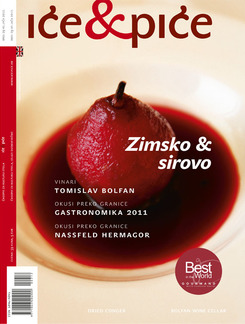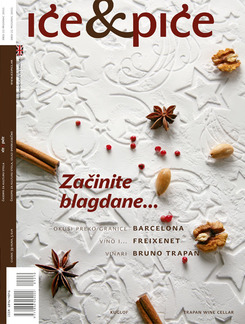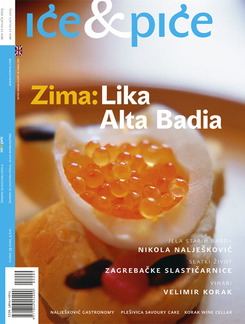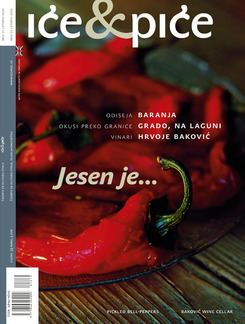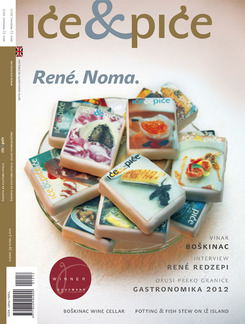Winter’s gone at last, thought it was never going to end, but, like a miracle, everything has gone green again. Spring at last. And lent’s a thing of the past too, and we can look after our own tummies without a hint of a sin. It’s almost completely warm, but we’re standing close to the fire. The lamb has to be roasted slowly, it has to be turned patiently, some say about six times a minute. It’s easy to get hungry and drink too much when something like this is being celebrated. Roasting a lamb is always connected with some celebration – they get spitted and turned for weddings, christenings, labour days and so on, for every excuse for a lamb is very welcome. However much someone might complain that the recipe is rudimentary, a lamb is always best on the spit. When the skin goes golden and the soft meat falls off the bones and melts in the mouth. It’s eaten while still hot, nobody cares about burned fingers or cutlery. But still, the lamb takes time to be roasted, and while we are waiting, we can manage to prepare and eat vitalac (a word for which there seems to be no proper English equivalent, though offal kebab would do to describe it). This is a dish that on Brač has always accompanied the preparation of young lamb or kid.
Nose to tail
Of course, this is no story for vegetarians or sensitive friends of animals, and you can’t urge the nippers to eat it if you’ve recently read the Seven Little Kids to them. And though you may avoid offal, it’s a really rewarding food. Of course, it’s not all that popular at the time of pre-packaged meat, which seems to have neither skin nor bone let alone head. But in recent years the fashion for tripe and liver has come back to the restaurant scene. The hard-headed folk, impoverished and/or cheap cuisine of remains, the tripes of Provence, Milanese busecca and so on keep hanging on. Restaurants like London’s St John Fergus Henderson became famous offering trotters, brawn, black pudding and similar treats that many frown at. The Spanish, Portugues and Italians all do tripes, though they were put out by BSE for a while.
Let’s go back though to the island on which a humble dish of despised offal has lived for thousands of years and become a much-appreciated treat. We don’t know where this nomadic, pastoral, Neolithic and Antique dish was created. Was it brought by the Greeks who were wandering around in the neighbourhood in the 4th century BC? At first not because of the land, but because of the flowers that thrived best here, the fragrant irises from the petals of which perfumes popular in Ancient Greece were produced. The colonists in Pharos, Issa and Korkyra built a home, brought their culture, food and customs; but strangely enough, vitalac is not eaten on these islands. But it is eaten on the Greek islands of Crete and Rhodes, where it’s called splinantero. Perhaps it did come with the Greeks, but then perhaps it would be eaten on the neighbouring islands, and not just on Brač and Pag. Perhaps it was dreamed up on this very Brač and then packed by oral transmission to Greece and Turkey. We can’t say that vitalac is a new cravat for then, in another good old Greek habit – the Turks and the Macedonians would have to pay royalties every time they do their kokoretsi. The basis for the recipes is lamb or kid tripes, and all the rest are just nuances. A spring of fresh oregano, juice of lemon growing to hand, a touch of pepper or milled red paprika. According to taste, habits and fancies. At base, Turkish kokoretsi, Macedonian kukurek, Greek splinantero and Brač vitalac are the same food. Vitalac, which contains the noun life in its name although it has no connection with it in etymology, perhaps owes its origin to ancient Etrurian, Roman rituals of predicting the future from the guts of sacrificed animals, and we know that lambs have always made the perfect scapegoat. Perhaps those from Cres or Pag are better known today, but in the 18th century they said that Brač had been known since antiquity for its kids and lambs. Or at least, so the Brač folk convinced Italian traveller Albert Fortis when he came to see them. We can only imagine what they offered him. If the lamb was particularly young, no more than six or seven kilos, perhaps Fortis had a go at vitalac. Fortis ascribed the quality of lamb and kid to the good pasture, praising Braca livestock in the travel log Journey to Dalmatia.
Animal husbandry was once vastly important for Brač, and many settlements developed precisely at the places where the shepherds had their shealings. The animals were outside all the year round, feeding on the fragrant Mediterranean herbage with its slight coating of spindrift. Because of this mixture of herb and salt the Brač lamb is of such high quality, and the milk that the kids and lambs suck so generous. One need not think much why it is lamb that is the meat all islanders value the most. The lamb still does not manage to get cold on festive boards, though the roots of this love and some other ancient shepherds’ customs built into it vanished at the beginning of the 20th century. We cannot say whether the gods required a blood tribute when the custom of putting on pastoral feasts started on Brač, but we do know that once a year, in spring, the shepherds put on a banquet for the owners. For one day the Brač plateau would turn into a vast table, the shepherds invited the people whose land they used for tilling or grazing and treated them to vernacular foods. Roast lamb, vitalac, cheese, cream, home made bread and wine. This was a chance to show what you could do, agree on old or make new contracts. We know that in this part of the world it is easier to agree on anything with a full stomach. Even if business has not been great, the landowner might, full, cancel a debt, for after a good meal, we can forgive anyone, even relatives, thought Oscar Wilde.
Silence of the lambs
Vitalac is an age-old sacrifice of the coming of spring or perhaps just a pauper’s dish created at the time when it was known who got the prime cuts and who the off cuts. Whatever the truth might be, this agnine gift should be received with gratitude and care. Although the recipe sounds pretty simple, vitalac is not all that easy to prepare. Best is to have someone who is going to do it for you with a lot of love. This is what they told me:
What you got to have: liver and lights of lamb or kid, from the milk, that hasn’t eaten grass, its tripes, peritoneum, salt and pepper to taste. The tripes are not washed, just well rubbed with the hand. We cut the liver and lights into slices, stick them on the spit, salt and pepper to taste, and put them to grill over the embers, turning all the time, till they half done. Then we wrap the peritoneum round the grilled meat, and then wrap it all in the tripes, carefully, tucking in the ends. Season, put it back over the embers, roast and turn the whole time, till the tripes take on a golden colour. We take the vitalac off the spit with two slices of bread and serve it hot.
Sounds as if it had come from some other age, when one still had the time to cook slowly. On the whole though, for the preparation of vitalac you need a lamb or kid that has not yet grazed grass. The offal is washed and cut into equal pieces, but not so small that they slide off the spit. Alternate layers of lights, liver, sweetbread, heart, wrap with peritoneum, salt and let it roast about half an hour over a slow fire. When the offal is almost roasted, clip off the roasted peaks so that you get something like a cylindrical shape that then, together with the cut pieces, you carefully wrap with tripes so that all the ends are closed. Salt again and roast until the wrapping gets golden crisp. Serve it still warm with home made bread and spring onion. A bit longer to wait, and the lamb will be done too.
You can order and try out vitalac in many of the taverns on Brač; on the preceding pages we show you how it is made in the Tomić tavern in Gornji Humac (which is, in terms of height above sea level, the most elevated populated spot on the Adriatic islands).
But on the waterfront of Bol itself (in the Riva tavern), Joško Eterović will make it for you in a more elegant spot. When the vitalac is done, i.e. when the tripes are crunchy, it is taken off the fire and cut into slices. It is served with jacket roasted new potatoes done in the ash. They are done in an oven where the embers, already completely combusted, are used to cover all the potatoes; after this, fresh hot embers are raked over them. Joško leaves them to roast for 20 minutes. When the potatoes are done they can be cut open and served in two ways: with olive oil, coarse salt and pepper, and mashed with the jacket; or cut into quarters half way down and have young goat’s cheese put on top to melt.
